Search Contents
I overheard some people argued the other day about smartphones uses and one said; “phone is phone, there is no difference”. I shouted from the other end and said; ‘it is not true’. Yes, it is not true. All phones are not the same. Some phones’ camera can turn your room into a paradise when you snap with it while others will rumple your destiny. You can ask Bobrisky (lol). In this post, we shall be discussing about the 10 Best Phones to Buy and Use in 2023.
We will not just end there, we will be discussing too about the smartphone uses. The factors to be considered before choosing and buying phones this 2023. Please, note, our list is not final, if you feel there is a brand you will want us to add, feel free to email us here: medarophe7@gmail.com. You may read also: 10 Signs of Smartphone Addiction “Nomophobia”
10 Best Phones to Buy and Use in 2023
1. Apple iPhone 14 Pro Max
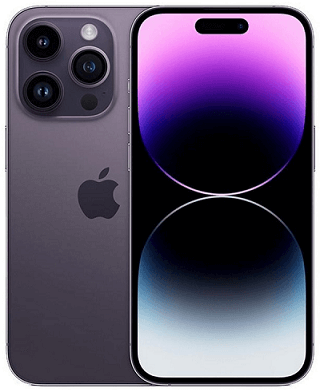
The Apple iPhone 14 Pro Max is nothing short of amazing. Its massive 6.7-inch Super Retina XDR OLED 120Hz display and powerful A15 Bionic CPU make it stand out. Additionally, it offers an Emergency SOS via the Satellite function, allowing you to notify family and friends in case of an emergency. The dual eSIM capability eliminates the need for a physical SIM card, making it the top choice among Apple phones.
Key Specifications and Features of Apple iPhone 14 Pro Max:
Network Technology:
- The iPhone 14 Pro Max supports various network technologies, including GSM, CDMA, HSPA, EVDO, LTE, and 5G. This ensures compatibility with a wide range of carriers and network standards.
Launch:
- The iPhone 14 Pro Max was announced on September 7, 2022, and it became available on September 16, 2022.
Body:
- Dimensions: 160.7 x 77.6 x 7.9 mm
- Weight: 240 g
- Build: The device features a glass front and glass back protected by Corning-made glass. It also has a stainless steel frame.
- SIM: The international version uses a Nano-SIM and eSIM, while the USA version supports dual eSIM with multiple numbers. In China, it offers dual SIM (Nano-SIM, dual stand-by).
- The device is IP68 dust and water-resistant, with a rating that allows it to be submerged in up to 6 meters of water for 30 minutes. It also supports Apple Pay (Visa, MasterCard, AMEX certified).
Display:
- Type: LTPO Super Retina XDR OLED with a 120Hz refresh rate
- HDR10 and Dolby Vision support
- Peak brightness: 1000 nits (typical) and 2000 nits (HBM)
- Size: 6.7 inches with an ~88.3% screen-to-body ratio
- Resolution: 1290 x 2796 pixels with a 19.5:9 aspect ratio and a pixel density of approximately 460 ppi
- Protection: Ceramic Shield glass
- Always-On display
Platform:
- OS: iOS 16 (upgradable to iOS 16.6.1, with a planned upgrade to iOS 17)
- Chipset: Apple A16 Bionic (4 nm)
- CPU: Hexa-core processor with two high-performance cores (Everest) at 3.46 GHz and four power-efficient cores (Sawtooth) at 2.02 GHz
- GPU: Apple GPU with 5-core graphics
Memory:
- Card Slot: No external memory card slot
- Internal Storage and RAM options: 128GB/6GB RAM, 256GB/6GB RAM, 512GB/6GB RAM, and 1TB/6GB RAM configurations
- Storage technology: NVMe
Main Camera:
- Triple-camera setup:
- 48 MP wide-angle camera with f/1.8 aperture, dual pixel PDAF, and sensor-shift OIS
- 12 MP telephoto camera with f/2.8 aperture, 3x optical zoom, PDAF, and OIS
- 12 MP ultrawide camera with f/2.2 aperture and 120˚ field of view
- TOF 3D LiDAR scanner for depth sensing
- Features include Dual-LED dual-tone flash, HDR for photos and panoramas.
- Video recording capabilities: 4K at various frame rates, 1080p at various frame rates (including high frame rates), 10-bit HDR, Dolby Vision HDR (up to 60fps), ProRes, Cinematic mode (4K at 24/30fps), and stereo sound recording.
2. Apple iPhone 14 Pro
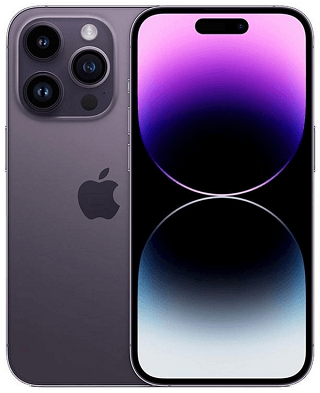
Featuring a stunning 6.1-inch Super Retina XDR 120Hz OLED display and the same A16 Bionic chipset as its sibling, the iPhone 14 Pro is a remarkable device. The Dynamic Island notch design sets it apart from previous Apple models, enhancing its appeal. It offers the classic Apple experience with a focus on software and camera quality.
10 Best Phones to Buy and Use in 2023
Key Specifications and Features of Apple iPhone 14 Pro
Network Technology:
- The iPhone 14 supports various network technologies, including GSM, CDMA, HSPA, EVDO, LTE, and 5G, ensuring compatibility with a wide range of carriers and network standards.
Launch:
- Announced: September 7, 2022
- Status: Available. Released on September 16, 2022.
Body:
- Dimensions: 147.5 x 71.5 x 7.9 mm
- Weight: 206 g
- Build: The device features a glass front and glass back protected by Corning-made glass. It also has a stainless steel frame.
- SIM: The international version uses a Nano-SIM and eSIM, while the USA version supports dual eSIM with multiple numbers. In China, it offers dual SIM (Nano-SIM, dual stand-by).
- The device is IP68 dust and water-resistant, with a rating that allows it to be submerged in up to 6 meters of water for 30 minutes. It also supports Apple Pay (Visa, MasterCard, AMEX certified).
Display:
- Type: LTPO Super Retina XDR OLED with a 120Hz refresh rate
- HDR10 and Dolby Vision support
- Peak brightness: 1000 nits (typical) and 2000 nits (HBM)
- Size: 6.1 inches with an ~87.0% screen-to-body ratio
- Resolution: 1179 x 2556 pixels with a 19.5:9 aspect ratio and a pixel density of approximately 460 ppi
- Protection: Ceramic Shield glass
- Always-On display
Platform:
- OS: iOS 16 (upgradable to iOS 16.6.1, with a planned upgrade to iOS 17)
- Chipset: Apple A16 Bionic (4 nm)
- CPU: Hexa-core processor with two high-performance cores (Everest) at 3.46 GHz and four power-efficient cores (Sawtooth) at 2.02 GHz
- GPU: Apple GPU with 5-core graphics
Memory:
- Card Slot: No external memory card slot
- Internal Storage and RAM options: 128GB/6GB RAM, 256GB/6GB RAM, 512GB/6GB RAM, and 1TB/6GB RAM configurations
- Storage technology: NVMe
3. Samsung Galaxy Z Fold 3 5G
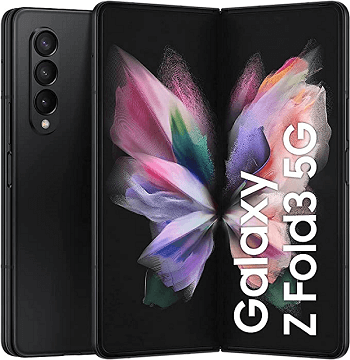
Samsung has come a long way with its foldable phones, and the Galaxy Z Fold 3 5G is a prime example of this progress. It boasts two 120Hz panels, powered by the Qualcomm Snapdragon 888 SoC, making it a powerhouse. The addition of S Pen support adds versatility to this foldable device. Its IPX8 dust and water certification make it the most affordable foldable smartphone for those who love flexible screens.
10 Best Phones to Buy and Use in 2023
Samsung Galaxy Z Fold 3 – Key Specification
Here’s an overview of its key specifications and features:
Network Technology:
- The Samsung Galaxy Z Fold 3 supports various network technologies, including GSM, CDMA, HSPA, EVDO, LTE, and 5G, ensuring compatibility with a wide range of carriers and network standards.
Launch:
- Announced: August 11, 2021
- Status: Available. Released on August 27, 2021.
Body:
- Dimensions:
- Unfolded: 158.2 x 128.1 x 6.4 mm
- Folded: 158.2 x 67.1 x 14.4-16 mm
- Weight: 271 g
- Build: The device features a glass front (Gorilla Glass Victus) when folded, a plastic front when unfolded, a glass back (Gorilla Glass Victus), and an aluminum frame.
- SIM: Nano-SIM and eSIM
- The device is IPX8 water-resistant, allowing it to be submerged in up to 1.5 meters of water for 30 minutes. It also has an armor aluminum frame for increased drop and scratch resistance and supports stylus input.
Display:
- Main Display:
- Type: Foldable Dynamic AMOLED 2X with a 120Hz refresh rate
- HDR10+ support
- Peak brightness: 1200 nits (peak)
- Size: 7.6 inches with an ~88.8% screen-to-body ratio
- Resolution: 1768 x 2208 pixels (~374 ppi density)
- Cover Display:
- Type: Dynamic AMOLED 2X with a 120Hz refresh rate and Corning Gorilla Glass Victus
- Size: 6.2 inches, 832 x 2268 pixels, 25:9 ratio
Platform:
- OS: Android 11 (upgradable to Android 13) with One UI 5.1.1
- Chipset: Qualcomm SM8350 Snapdragon 888 5G (5 nm)
- CPU: Octa-core processor with a combination of Cortex-X1, Cortex-A78, and Cortex-A55 cores
- GPU: Adreno 660
Memory:
- Card Slot: No external memory card slot
- Internal Storage and RAM options: 256GB/12GB RAM, 512GB/12GB RAM
- Storage technology: UFS 3.1
Main Camera:
- Triple-camera setup:
- 12 MP wide-angle camera with f/1.8 aperture, Dual Pixel PDAF, and OIS
- 12 MP telephoto camera with f/2.4 aperture, 2x optical zoom, PDAF, and OIS
- 12 MP ultrawide camera with f/2.2 aperture and 123˚ field of view
- Features include LED flash, HDR, and panorama.
- Video recording capabilities: 4K at 60fps, 1080p at 60/240fps (gyro-EIS), 720p at 960fps (gyro-EIS), and HDR10+ support.
Selfie Camera:
- Single under-display camera:
- 4 MP with f/1.8 aperture and 2.0µm pixel size
- Cover camera:
- 10 MP with f/2.2 aperture
- Features include HDR.
- Video recording capabilities: 4K at 30fps and 1080p at 30fps with gyro-EIS.
Sound:
- Loudspeaker: Yes, with stereo speakers
- 3.5mm jack: No
- Additional features include 32-bit/384kHz audio and tuning by AKG.
4. Google Pixel 7 Pro
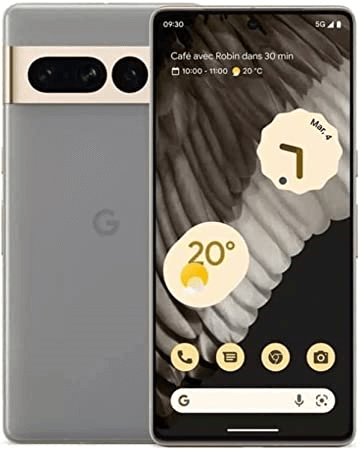
The Google Pixel 7 Pro marked Google’s return to the flagship smartphone market, and it didn’t disappoint. Known for its pure Android experience and camera quality, the Pixel 7 Pro lives up to expectations. Its triple camera system, including a 5x telephoto lens and 30x Super Res Zoom, delivers fantastic photography. The 6.7-inch Smooth Display with up to 120Hz refresh rate ensures a top-notch user experience.
5. Xiaomi 12 Pro
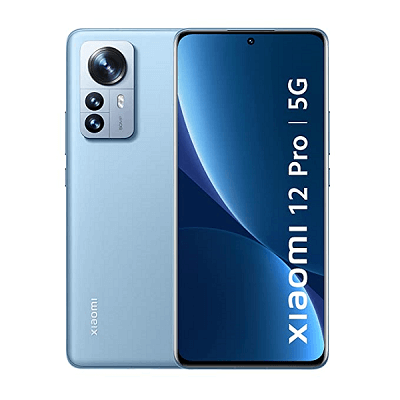
Xiaomi’s 12 Pro impresses with its 10bit 2K+ Curved AMOLED Display, Harman Kardon sound, and 50+50+50MP flagship cameras. It’s known for offering robust specs at an affordable price point. With a 50-megapixel triple rear camera array and Qualcomm’s top-tier 8 Gen 1 processor, it’s considered one of the most cost-effective flagship smartphones on the market.
10 Best Phones to Buy and Use in 2023
6. Samsung Galaxy S22 Ultra 5G
Samsung’s Galaxy S22 Ultra 5G is a photography powerhouse featuring the Qualcomm Snapdragon 8 Gen 1 chipset. It boasts a Space Zoom feature for capturing distant objects and supports the S Pen. The 5G connectivity powered by the first 4nm processor from Galaxy ensures fast and reliable performance.
7. IQOO 9T 5G
The IQOO 9T 5G, powered by the Qualcomm Snapdragon 8+ Gen 1 CPU, is a gaming beast. Its large 6.78-inch display and 4,700mAh battery make it the perfect choice for gamers. The Snapdragon 8+ Gen 1 processor offers exceptional performance, and the device supports Real-Time Extreme Night Vision for night-time photography and videography.
8. Samsung Galaxy Z Fold 4
Samsung’s Galaxy Z Fold 4 comes with a 7.6-inch folding display and improved primary back camera. It introduces a new taskbar for multitasking and is considered the best foldable smartphone in the world. The cover screen is more adaptable and functional than before.
9. Apple iPhone 13 Pro Max
While released in 2021, the iPhone 13 Pro Max remains a top-tier choice in 2023. Its 120Hz OLED panel, A15 Bionic chip, and impressive battery life set it apart as a powerful and well-rounded device.
10. Samsung Galaxy Z Flip 4
For those who yearn for the nostalgia of flip phones, the Samsung Galaxy Z Flip 4 is a stylish and high-performance option. It features the Snapdragon 8+ Gen 1 SoC, ensuring robust performance without heating issues. Its compact design and cover display for selfies make it an appealing choice for flip phone enthusiasts.
These smartphones offer a wide range of features and capabilities to cater to various user preferences and needs in 2023.
10 Best Phones to Buy and Use in 2023
Smartphones Uses in 2023
In 2023, smartphones continue to play a central role in our daily lives, offering a wide range of uses and functionalities. Here are some of the common uses of smartphones in 2023:
- Communication: Smartphones remain essential tools for communication, including making voice calls, sending text messages, and using various messaging apps like WhatsApp, iMessage, and Messenger.
- Social Media: People use smartphones to access and update their social media profiles on platforms like Facebook, Instagram, Twitter, TikTok, and LinkedIn. It’s where they connect with friends, family, and colleagues and stay updated on current events and trends.
- Web Browsing: Smartphones are frequently used for browsing the web, searching for information, reading news articles, and shopping online. Mobile browsers have become more powerful, offering a desktop-like experience.
- Email: Email remains a critical communication tool for both personal and professional use. Smartphones allow users to access their email accounts on the go.
- Entertainment: Smartphones are entertainment hubs. Users stream videos on platforms like Netflix, YouTube, and Amazon Prime Video. They also play games, listen to music, and engage with podcasts and audiobooks.
- Navigation and Maps: GPS technology in smartphones makes it easy to navigate and find directions. Map apps like Google Maps and Apple Maps help users navigate their surroundings, locate businesses, and find places of interest.
- Photography and Videography: Smartphones continue to improve their camera capabilities. Users rely on their smartphones to take high-quality photos and videos, and they often share these on social media or with friends and family.
- Health and Fitness: Health and fitness apps and wearables sync with smartphones to track physical activity, monitor heart rate, count calories, and provide health-related information. These apps help users maintain a healthy lifestyle.
- Productivity: Smartphones are used for work-related tasks, including checking emails, scheduling appointments, and editing documents. Productivity apps such as Microsoft Office and Google Workspace are commonly used on smartphones.
- Payments and Banking: Mobile wallets and banking apps enable users to make payments, transfer funds, and manage their finances securely from their smartphones. NFC technology allows for contactless payments.
- Smart Home Control: Many people use their smartphones to control smart home devices such as thermostats, lights, security cameras, and locks through apps or voice assistants like Siri, Google Assistant, and Alexa.
- Video Calls: Video conferencing apps like Zoom, Microsoft Teams, and Skype are commonly used for work meetings, online classes, and staying connected with loved ones.
- Augmented Reality (AR) and Virtual Reality (VR): AR and VR apps and games are becoming more popular, providing immersive experiences and educational tools.
- E-commerce and Shopping: Smartphones are integral for online shopping, allowing users to browse, compare prices, make purchases, and track deliveries through e-commerce apps.
- Emergency Services: Smartphones have built-in features like emergency calling, location sharing, and SOS functions that can be crucial in emergency situations.
- Language Translation: Language translation apps are helpful for travelers or those communicating with people who speak different languages.
- Note-taking and Organization: Users rely on note-taking and organization apps to jot down ideas, create to-do lists, and set reminders.
- Document Scanning: Smartphones can be used as portable document scanners, making it easy to digitize and share documents.
- Accessibility: Smartphones offer a wide range of accessibility features for individuals with disabilities, including screen readers, voice commands, and magnification tools.
Overall, smartphones in 2023 continue to be versatile, multi-functional devices that cater to various aspects of modern life, enhancing convenience, connectivity, and productivity. 10 Best Phones to Buy and Use in 2023.
What Factors to Consider before Choosing or Buying Smartphones in 2023
Choosing the right smartphone can be a significant decision, as it’s a device you’ll likely use daily for several years. To make an informed choice, consider the following factors before buying a smartphone:
- Operating System (OS):
- iOS: iPhones run on Apple’s iOS, known for its user-friendly interface, regular updates, and strong privacy features.
- Android: Most other smartphones use the Android OS, which offers a wide variety of devices, customization options, and app availability.
- Budget:
- Determine how much you’re willing to spend. Smartphones come in a range of prices, from budget-friendly to high-end flagship models.
- Brand and Model:
- Research different brands and models to find one that suits your needs and preferences. Established brands like Apple, Samsung, Google, and OnePlus offer reliable options.
- Screen Size and Quality:
- Consider the screen size, resolution, and display technology (e.g., OLED, AMOLED, LCD). Choose a size that’s comfortable for your daily use, whether for multimedia, reading, or productivity.
- Performance:
- Pay attention to the processor (CPU) and RAM. A more powerful CPU and ample RAM contribute to smoother multitasking and faster performance.
- Storage:
- Determine how much storage you need. Options typically include 64GB, 128GB, 256GB, and more. Consider your photo and video storage needs, as well as apps and files.
- Battery Life:
- Check the device’s battery capacity and consider your usage patterns. Look for smartphones with all-day battery life or those with fast charging capabilities.
- Camera Quality:
- Assess the camera specifications, including megapixels, aperture size, and image stabilization. Consider your photography needs, such as low-light performance and video recording quality.
- Connectivity:
- Ensure the smartphone supports the necessary network bands for your carrier. Consider 5G compatibility if available in your area.
- Build Quality and Design:
- Look for a smartphone with a design and build quality that appeals to you. Consider factors like materials (glass, plastic, metal), water resistance, and durability.
- Software and Updates:
- Consider the manufacturer’s track record for providing software updates and security patches. Timely updates are important for security and new features.
- Biometric Security:
- Check for biometric security features like fingerprint sensors, facial recognition, or iris scanning to secure your device.
- Additional Features:
- Think about any specific features you need, such as a headphone jack, expandable storage, or stylus support.
- Ecosystem Compatibility:
- If you’re already invested in a particular ecosystem (e.g., Apple, Google), consider how well the smartphone integrates with your other devices and services.
- Reviews and User Feedback:
- Read reviews from tech experts and user feedback to gain insights into real-world performance and user experiences.
- Warranty and Support:
- Check the warranty coverage and customer support options provided by the manufacturer or seller.
- Carrier Compatibility:
- Ensure that the smartphone is compatible with your mobile carrier and supports the necessary network bands.
- Future-Proofing:
- Consider future technology trends like 5G, as well as the longevity of software support, when making your decision.
By carefully considering these factors, you can choose a smartphone that aligns with your needs and preferences, ensuring a satisfying and long-lasting mobile experience.
10 Best Phones to Buy and Use in 2023



